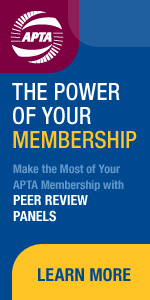

| In This Issue |
| » BREAKING NEWS |
| » NEWS HEADLINES |
| » IN DEPTH: HIGH-SPEED RAIL |
| » COMMENTARY |

Check out the classifieds in this issue to find numerous job opportunities including a General Manager!
| NEWS HEADLINES |
EESI Speakers Highlight Infrastructure Benefits
BY SUSAN BERLIN, Senior Editor
Marcy Lowe, a senior research analyst with Duke University’s Center on Globalization, Governance & Competitiveness,  described the role of public transportation suppliers in high-value manufacturing supply chains, as well as practical experience in using transit to spur regional economic revitalization, at a packed Jan. 14 briefing on Capitol Hill hosted by the Environmental and Energy Study Institute (EESI).
described the role of public transportation suppliers in high-value manufacturing supply chains, as well as practical experience in using transit to spur regional economic revitalization, at a packed Jan. 14 briefing on Capitol Hill hosted by the Environmental and Energy Study Institute (EESI).
Lowe defined the “value chain” as beginning with the supply chain—from raw materials to distribution and sales of the final product—but also taking into account research and development, design, production, logistics, and marketing, which she called “value-added activities.” In the case of bus manufacturing, the value chain incorporates major component producers (engine, axles, tires, fuel systems, brakes, etc.); system builders who use the components to create the chassis, electric/electronic components, and bus body and interior; and ultimately the original equipment manufacturer and others that make the finished buses available to public transit agencies.
While only five bus manufacturers dominate the North American industry, she said, the value chain disseminates the financial and labor benefits more widely. She showed how this process makes jobs available, many of them in the states hardest-hit by the recession, but stressed that predictable investment is necessary if these suppliers are to create and maintain jobs.
Representatives of railcar, transit vehicle seating, and technology suppliers and a local government partnership providers also contributed to the discussion, Michael Pracht, president of U.S. Railcar LLC in Columbus, OH, reported on the role of his company’s self-propelled Diesel Multiple Unit to the transit rail industry, noting that his firm is the only U.S.-owned and operated railcar manufacturer.
David McLaughlin, vice president of American Seating Company in Grand Rapids, MI, showed the effects of American Recovery and Reinvestment Act (ARRA) funding on its operations. Each incremental $1 million in revenue adds three to six full-time employees for a year, he explained.
In 2009, McLaughlin said, the company’s revenue included $2.9 million in ARRA funds; during that year, the company added 11 full-time employees and an estimated additional 64 employees through the purchase of goods and services. American Seating anticipates adding 11 to 14 new jobs through ARRA-related activity this year, as well as between 64 and 82 new employees in the supply chain.
Tom Webb, director, business development, for BAE Systems, laid out his company’s work with hybrid propulsion systems worldwide, including partnerships with bus manufacturers. He reported that the U.S. leads the world in development and adoption of hybrid bus technology, creating high-tech green jobs and helping to support the nation’s energy security, adding: “It’s a good-news story for manufacturers today.”
Carol Caruso, senior vice president of advocacy for the Greater Cleveland Partnership—which comprises both the Chamber of Commerce and the economic development organization for northeast Ohio—presented a study that illustrated the economic effects resulting from the operation of the Greater Cleveland Regional Transit Authority’s HealthLine Bus Rapid Transit service. The line, which opened in 2008, has helped to revitalize the Euclid Avenue corridor between downtown Cleveland and the medical complex, spurring increased ridership and widespread private-sector investment.
EESI noted that H.R. 2847, The Jobs for Main Street Act, contains targeted investments to stimulate job creation and lay a foundation for long-term productivity gains. The legislation passed the House in December 2009, but the Senate has not yet taken it up.
The texts of the speakers’ presentations are available at the EESI web site.
| « Previous Article | Return to Top | Return to Main | Next Article » |
|
||||||
| AMERICAN PUBLIC TRANSPORTATION ASSOCIATION |
Telephone (202) 496-4800 • Fax (202) 496-4321
Search Back Issues